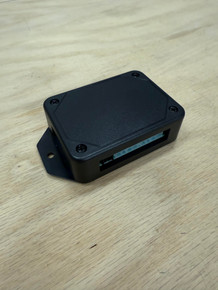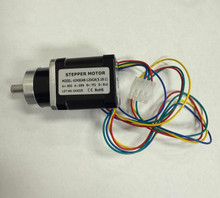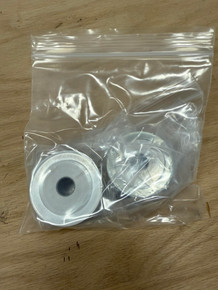 Loading... Please wait...
Loading... Please wait...- Home
- FAQ
FAQ
How strong are parts built with the X-Winder? Unlike a metal which has the same properties in all directions (isotropic), the properties of filament wound materials are dependent on the orientation of the fibers in each layer, thus strength depends on the manner and direction in which the load is applied. For parts of comparable geometry, filament orientation and fiber composition, the strength of X-Winder built parts is nearly the same as comparable commercially available products.
How much do parts cost that are built by the X-Winder? You can expect to pay from 50% to 80% less for X-Winder built parts than for the equivalent geometric part from a commercial vendor. The larger the part, the larger the absolute savings. For example, a 6 foot long 3" diameter (0.060" thick wall) carbon fiber tube costs about $300 ($50/ft); however, if this same tube were built with the X-Winder it would need 4 layers and require about 3,600 feet of 6K carbon fiber (0.125" wide) that costs $60 for 3,750 feet. Add in about $4 in glue and $1 in electricity and the absolute savings is $300-$65=$235 or approx. 78% savings. You can do other comparisons by using 0.015" per layer and the length of the filament per layer equal to twice the surface area of the part divided by the width of the filament tow.
How long a part can I build? You can build parts up to 20 feet long or longer. To reduce the X-Winder shipping costs, we do not include the Long bars with the X-Winder. You need to buy 3 long bars of equal length, one front bar for the mandrel supports and two rear bars for the carriage support.
What’s the maximum width of the mandrel? The larger the mandrel diameter, the more motor torque is required to rotate the mandrel. The 2X-23 and the 4X-23 can wind mandrel widths (diameters) up to about 8 inches before mandrel torque becomes an issue.
How do I remove the Mandrel? Where do I get a Mandrel? Can I wind a concave Mandrel? Can I use a 3D printed Mandrel? There are two types mandrels: removable or 'remain-in-place'. 2-Axis Mandrels are described in detail in the tutorial video. 4-Axis Mandrels are described here.
Is Clean up messy? No, just clean up the rollers, the resin bath and the delivery head and you are done. See actual clean up here.
How thick (or thin) can the wall thickness be? We’ve built parts up to 0.25” (7 mm) in thickness, or as thin as 0.015" (0.40 mm) wall thickness.
Can the roll of filament be replaced during the winding process? Yes, but you’ll want to pause the machine at the end of one of the passes, not in the middle of the part to keep the winding pattern intact.
Does the machine recognize when you’ve run out of filament? No. You’ll have to monitor that.
Can you wind prepreg tows? Yes – if the prepreg can be delivered from a reel through the delivery head, then it can be wound onto the mandrel.
Can I Custom Program the Software? Software operation is described in the tutorial video. You can custom program the X-Winder by modifying the G-Code - there are several examples on our YouTube Channel like this and like this. Because G-Code is an industry standard and it’s a plain view text file, anyone can change the programming of the X-Winder. Also, see the section on “For Developers: Programming / Hacking” that describes ways in which you can interface to the X-Winder.
Why is heat curing necessary? Its not, but the curing of most epoxy glue is accelerated by heat. Heat curing helps the part attain its maximum strength. Parts that cure at 50F (10C) or colder may never cure properly.
Is 220V AC input OK? Yes – the X-Winder’s power supply accepts 100v-240v AC input and produces 24V 3A output.
Are assembly instructions included? Yes – the assembly is fully documented in the User’s Manual.
Does the software use metric (mm) or imperial units (in)? Both, user selectable
New Products
-
$95.00
-
$150.00
-
$145.00
-
$90.00
-
$250.00






